
About Brain Fog:
- Brain fog itself is not a medical condition but instead a symptom of other medical conditions.
- It is a term used to describe a variety of symptoms that can affect your ability to think clearly.
- Brain fog is characterized by confusion, forgetfulness, and a lack of focus and mental clarity.
- Some examples of things a person might do because of brain fog include:
- forgetting about a task they had to complete;
- taking much longer than usual to complete simple tasks;
- feeling frequently distracted;
- feeling tired when working;
- Causes: Brain fog is typically rooted in a lifestyle that promotes hormonal imbalances.
- Electromagnetic radiation – from computer, mobile phone, tablets
- Stress – reduce blood flow to the brain causing poor memory
- Lack of sleep, no exercise
- Diet: food allergies or sensitivities
- Toxins, pollution, chemical substances, and insecticides
- Medications
- Treatment: Treatment depends on the cause. For example, if you’re anaemic, iron supplements may increase your production of red blood cells and reduce your brain fog.
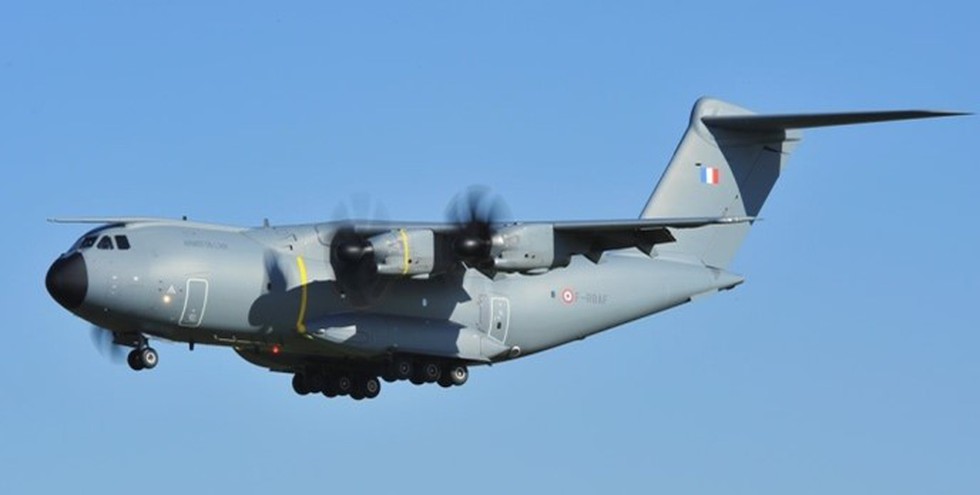
About Airbus A400M:
- It is a European-built military transport aircraft.
- The aircraft is manufactured by Airbus Defence and Space, a division of the European aerospace and defence firm Airbus.
- It combines the capability to carry strategic loads with the ability to deliver even into tactical locations with small and unprepared airstrips.
- It can carry large cargo, vehicles, troops, and paratroopers or be configured for medical evacuation (MEDEVAC) missions.
- Features:
- A powerful turboprop engine that gives the A400M the ability to operate from short, unimproved airfields.
- Maximum takeoff weight: 141 metric tons (309,000 pounds)
- Maximum payload: 37 metric tons (41 short tons).
- It can carry up to 116 fully equipped troops or 66 stretchers and 25 medical attendants. The cargo hold can take nine standard military pallets.
- Range: 8,900 kilometres (5,530 miles)
- Speed: 780 kilometres per hour (485 miles per hour)
- The aircraft is equipped with in-flight refuelling capabilities.
- The aircraft’s independent navigation system comprises an inertial reference system (IRS) integrated with a global positioning system (GPS).
- It features an advanced glass cockpit with modern avionics and control systems.
What is a turboprop aircraft?
- A turboprop aircraft uses a turbo-prop engine rather than a piston-powered engine or a jet engine.
- They have one or more gas-turbine engines connected to a gearbox that turns the propeller(s) to move the aircraft on the ground and through the air.
- Turboprop aircraft have lower operating costs than jets because they burn less fuel, but they are also slower than jets.
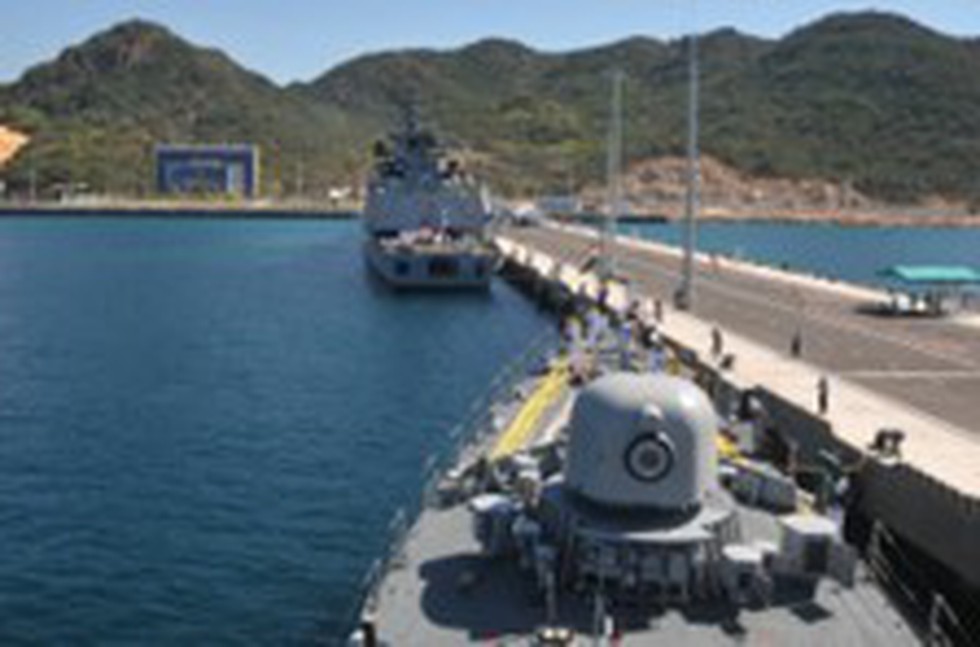
About Cam ranh bay:
- Location: Cam Ranh Bay is a deep-water bay located in Khánh Hòa Province, Vietnam, on the South China Sea.
- Size: It is approximately 20 miles (32 km) long from north to south and up to 10 miles (16 km) wide.
- Depth: The bay is up to 164 feet (50 m) deep, making it one of the deepest natural harbours in Southeast Asia.
- Facilities: The port has two main piers, one for general cargo and one for oil tankers. It also has a number of other facilities, including a repair yard, a fuel depot, and a container terminal.
- It is a major refuelling and repair station for ships in the South China Sea.
- Historical Significance:
- During the colonial era, it was controlled by the Champa Kingdom and later became part of the Vietnamese territories.
- In the 19th century, the French established a major military presence in the bay.
- During the Vietnam War, Cam Ranh Bay gained significant importance as a strategic military base for both the United States and South Vietnam. The United States constructed extensive facilities, including an airbase and a deep-water port, to support its military activities during the war.
- Following the end of the Vietnam War in 1975, Cam Ranh Bay came under the control of the Socialist Republic of Vietnam.
- The Soviet Union subsequently leased the former American facilities and established a major naval base there.
- The Soviet Navy maintained a presence in Cam Ranh Bay throughout the Cold War until the early 2000s.
Key facts about INS Kirpan:
- It is an indigenously-built in-service missile Corvette.
- It is a Khukri class missile corvette commissioned into the Navy on January 12, 1991.
- Features:
- It has a displacing capacity of close to 1,400 tonnes.
- It is capable of a speed of more than 25 knots.
- The Khukri class are equipped with Diesel Engines assembled in India.
- The ship is fitted with a medium-range gun, 30 mm close-range guns, chaff launchers, and surface-to-surface missiles.
- It performs a wide variety of roles, including coastal and offshore patrol, coastal security, surface warfare, anti-piracy, and Humanitarian Assistance and Disaster Relief (HADR) operations.

About Section 498A of IPC:
- It deals with the criminal offense of "cruelty by husband or relatives of husband" towards a married woman.
- This section was introduced in 1983 as an amendment to the IPC to address the growing concern of domestic violence and harassment faced by married women in India.
- Under Section 498-A IPC, a husband or his relatives can be sentenced to a jail term of three years for subjecting the wife to cruelty.
- The section applies to married women only.
- Section 498A of IPC reads as “Whoever, being the husband or the relative of the husband of a woman, subjects such woman to cruelty shall be punished with imprisonment for a term which may extend to three years and shall also be liable to fine”.
- For the purposes of this section, 'cruelty' means:—
- any wilful conduct which is of such a nature as is likely to drive the woman to commit suicide or to cause grave injury or danger to life, limb or health (whether mental or physical) of the woman; or
- harassment of the woman where such harassment is with a view to coercing her or any person related to her to meet any unlawful demand for any property or valuable security or is on account of failure by her or any person related to her to meet such demand."
- The term “cruelty” is comprehensive, encompassing various forms of abuse that can be inflicted upon a married woman.
- Bail under Section 498A:
- Section 498A of the Indian Penal Code, enacted in 1860, is a non-compoundable and cognizable offence.
- Bail under Section 498A can only be granted by the Magistrate once a First Information Report (FIR) has been registered by the police based on a complaint filed by the aggrieved party.
- The Supreme Court has ruled that Section 498A should be used sparingly and only in cases where there is genuine evidence of cruelty.
- The court has also ruled that the section should not be used as a tool to settle personal scores.
Other Indian laws to help curb the instances of violence against women are,
- Protection of Women from Domestic Violence Act, 2005 (PWDVA);
- Dowry Prohibition Act, 1961;
- Sexual Harassment of Women at Workplace (Prevention, Prohibition, and Redressal) Act, 2013;
- Indian Penal Code (IPC) Amendments: Various amendments to the IPC have been made to address violence against women, including:
- Section 376: Dealing with punishment for rape, with stricter provisions for different types of rape offenses.
- Section 354: Addressing criminal assault or use of criminal force against women with intent to outrage her modesty.
- Section 354A: Dealing with sexual harassment and punishment for the same.
- Section 354D: Criminalizing stalking and providing punishment for the offense.
- Section 509: Dealing with words, gestures, or acts intended to insult the modesty of a woman.
- Criminal Law (Amendment) Act, 2013: This act was passed in response to the Nirbhaya case and brought significant changes to laws dealing with sexual offenses. It included provisions for stricter punishments for rape, gang rape, and acid attacks, among others.

What is a loan-loss provision?
- The RBI defines a loan loss provision as an expense that banks set aside for defaulted loans.
- Banks set aside a portion of the expected loan repayments from all loans in their portfolio to cover the losses either completely or partially.
- In the event of a loss, instead of taking a loss in its cash flows, the bank can use its loan loss reserves to cover the loss.
- The level of loan loss provision is determined based on the level expected to protect the safety and soundness of the bank.
- The Reserve Bank of India (RBI) recently proposed to move the banking system to an expected credit loss-based provisioning approach from an “incurred loss” approach.
What is the Expected Credit Loss (ECL) regime?
- Under this practice, a bank is required to estimate expected credit losses based on forward-looking estimations rather than wait for credit losses to be actually incurred before making corresponding loss provisions.
- As per the proposed framework, banks will need to classify financial assets (primarily loans) as Stage 1, 2, or 3, depending on their credit risk profile, with Stage 2 and 3 loans having higher provisions based on the historical credit loss patterns observed by banks.
- Thus, through ECL, banks can estimate the forward-looking probability of default for each loan, and then by multiplying that probability by the likely loss given default, the bank gets the percentage loss that is expected to occur if the borrower defaults.
- This will be in contrast to the existing approach of incurred loss provisioning, whereby step-up provisions are made based on the time the account has remained in the Non-Performing Asser (NPA) category.
- Benefits of the ECL regime:
- It will result in excess provisions as compared to a shortfall in provisions, as seen in the incurred loss approach.
- It will further enhance the resilience of the banking systemin line with globally accepted norms.
What is the problem with the incurred loss-based approach?
- It requires banks to provide for losses that have already occurred or been incurred.
- The delay in recognizing loan losses resulted in banks having to make higher levels of provisions which affected the bank's capital. This affected banks’ resilience and posed systemic risks.
- The delays in recognizing loan losses overstated the income generated by the banks, which, coupled with dividend payouts, impacted their capital base.

Key Findings
- Previous analyses of ancient genomic data have suggested that two major genetic turnover events occurred in Western Eurasia;
- One associated with the spread of farming around 7,000-6,000 BC and a second resulting from the expansion of pastoralist groups from the Eurasian steppe starting around 3,300 BC.
- The period between these two events, the Copper Age, was characterized by a new economy based on metallurgy, wheel and wagon transportation, and horse domestication.
- However, what happened between the demise of Copper Age settlements (around 4,250 BC) and the expansion of pastoralists is not well understood.
- The recent study revealed that early contact and admixture between Copper Age farming groups from south-eastern Europe and Neolithic groups from the steppe zone in today’s southern Ukraine, possibly starting in the 5,500 BC when settlement densities shifted further north.
- The early admixture during the Neolithic appears to be local to the NW Black Sea region of the fourth millennium BC and did not affect the hinterland in southeastern Europe.
About Copper Age:
- The Chalcolithic period, also known as the Copper Age.
- It describes a transitional period in human prehistory between the Neolithic period (New Stone Age) and the Bronze Age.
- It is characterized by the use of both stone tools and the beginning of metalworking, specifically the utilization of copper.
- One of the defining characteristics of this period is the simultaneous use of stone tools and early metal objects, primarily copper.
- In India, it spanned around 2000 BC to 700 BC.
- This culture was mainly seen in Pre-Harappan phase, but at many places it extended to Post-Harappan phase too.
- The people were mostly rural and lived near hills and rivers.
- The Chalcolithic culture corresponds to the farming communities, namely Kayatha, Ahar or Banas, Malwa, and Jorwe.
- The people of this age started doing animal husbandry and agriculture.
- Apart from wheat, rice, they used to grow pulse crops like millet, lentil, urad and moong etc.
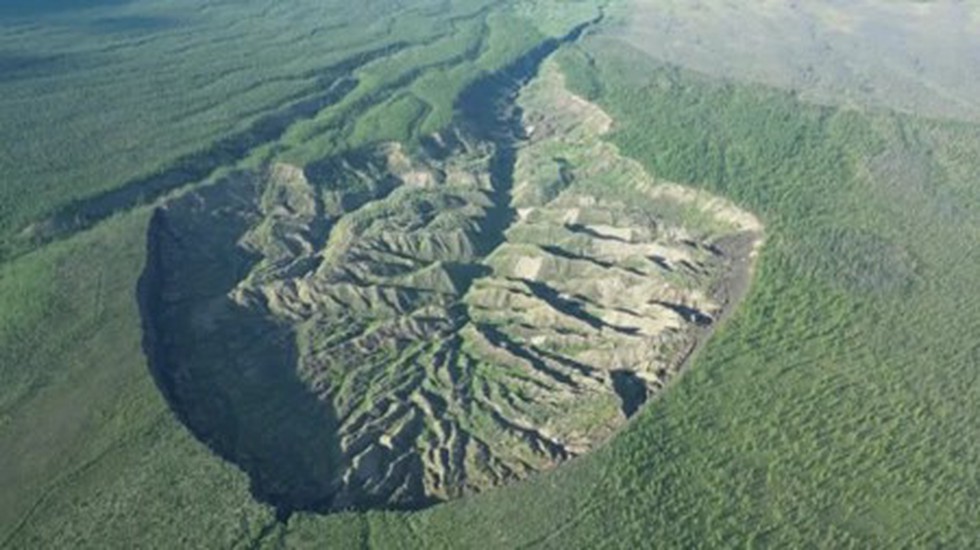
About Batagaika Crater:
- It is located in Russia's Far East that forms the world's biggest permafrost crater.
- Scientists believe that the crater is the result of a melting permafrost land, which was frozen during the Quaternary Ice Age 2.58 million years ago,
- It began to form after the surrounding forest was cleared in the 1960s and the permafrost underground began to melt, causing the land to sink.
- It is also called as "gateway to the underworld," by some locals in Russia's Sakha Republic It has a scientific name: a mega-slump.
- This is produced by higher air temperatures, warming climate and anthropogenic impact.
- It holds clues to prehistoric life on Earth. Researchers believe the exposed ice and soil along the crater’s edges could hold up to 200,000 years of geological and biological history.
- Impact on Environment
- The soil beneath the slump, which is about 100 metres deep (328 feet) in some areas, contains an "enormous quantity" of organic carbon that will release into the atmosphere as the permafrost thaws, further fuelling the planet's warming.
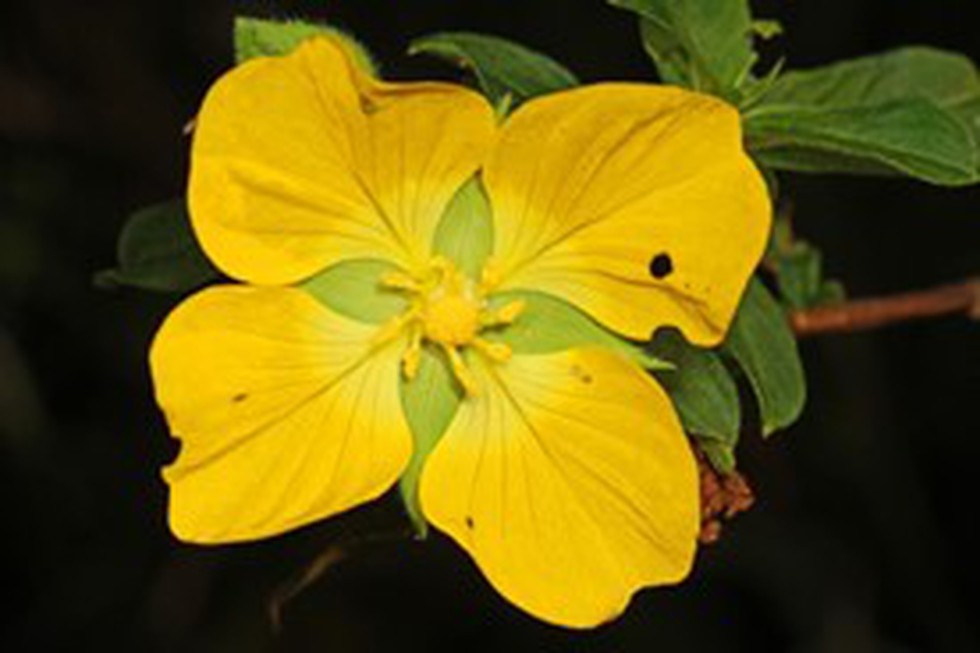
About Ludwigia Peruviana:
- It is popularly called primrose willow, Ludwigia Peruviana, is a native of Central and South America.
- Its flower is pale yellowish in colour and the plant grows to a height of about 12 feet.
- It is an aquatic plant, which is now challenging the existence of local vegetation in various swampy areas around the world.
- The rapid large-scale spread of the weed — which was probably introduced as an ornamental plant for its tiny yellow flowers
- It grows faster in wetlands than other harmful weeds.
- The pre-monsoon temperature and monsoon rains help this weed grow faster.
- It has shaken the balance of these perennial foraging grounds, limiting the growth of grass and native plants that are palatable to elephants and other animals including gaur.
- It is among the 22 priority invasive plants in Tamil Nadu.
- Unlike other invasive plants, Ludwigia poses a unique challenge as it grows in swamps and there is little scope to use machinery which may further destroy the ecosystem.
- Even if Ludwigia is pulled out manually, the soft plant easily breaks and it spreads again from the root or broken stems that fall in the swamp.

About ONDC Academy:
- It is an initiative of Department for Promotion of Industry and Internal Trade (DPIIT) initiative to create a facilitative model to help small retailers take advantage of digital commerce.
- It was launched by ONDC in collaboration with NSE Academy Ltd, a subsidiary of the National Stock Exchange.
- It is not an application, platform, intermediary, or software but a set of specifications designed to foster open, unbundled, and interoperable open networks.
- Benefits
- The academy is a repository of educational and informative textual and video content programmes in multiple Indian languages.
- It will provide a curated learning experience providing guidance and best practices for a successful e-commerce journey.
- Anyone without any knowledge of e-commerce can learn how to make a seller app with a technology service provider to aggregate all sellers from a nearby marketplace to make these products available online.
- It would also enable certification issued by NSE Academy to individuals completing an assessment developed by the institute.
Key Facts about ONDC
- It is a Section 8 company, under the initiative of DPIIT with a mission to democratize digital commerce.
- It develops and maintains the ONDC Protocol, an open technical standard similar to UPI, HTTP and SMTP.
- It comprises of buyer-side apps where consumers can place orders, seller-side apps that on board merchants and display their listings, and logistics platforms that handle deliveries.
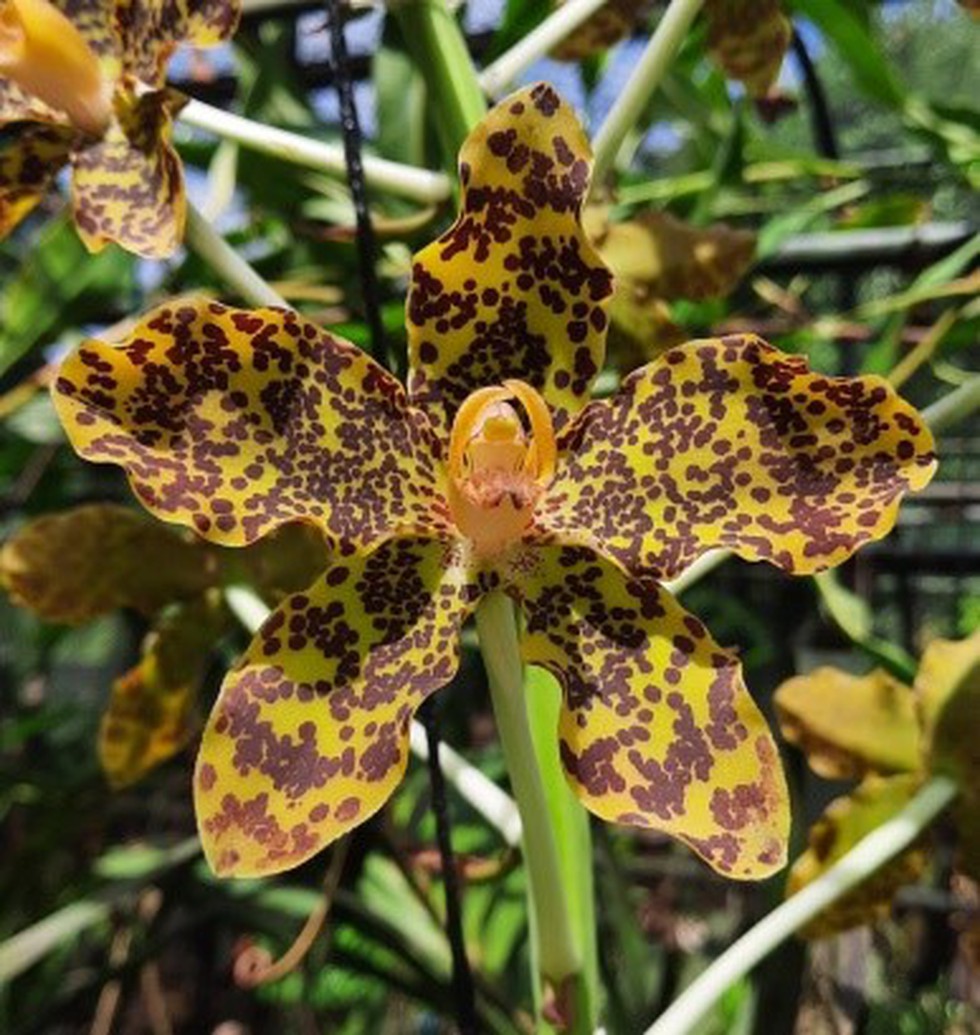
About Tiger orchid:
- It is the largest orchid species in the world.
- It is called Tiger Orchid because of its splendid flowers which sport striking brown spots against a yellow backdrop, bringing to mind tigers.
- After 8-12 years of growth, Grammatophyllum speciosum produces flowers in alternate years in its natural habitat.
- It is often grown as an ornamental orchid in gardens and parks for its attractive foliage and large flowers.
- It flowers in January or July, but plants do not flower every year.
- The plant was listed by the Guinness Book of World Records as the world’s tallest orchid, with specimens recorded up to 7.62 metres in height
- Distribution: Malaysia, Indonesia, Thailand, Myanmar and Laos.
- Habitat: They grow in Terrestrial (Primary Rainforest, Freshwater Swamp Forest, Riverine) habitats.
- Preferred Climate Zone: Tropical, Sub-Tropical / Monsoonal.
- Conservation status
- CITES : Appendix II





























































































































































.png)
.png)
.png)
.png)
.png)


.png)
.png)
.png)





.png)
.png)






.png)
.png)
.png)
.png)
.png)
.png)
.png)
.png)
.png)

.png)







.png)
.png)


.png)
.png)
.png)


.png)

.png)
.png)





.jpg)

.png)
.png)


.png)

.png)
.png)
.png)

.jpg)

.jpg)


.png)

.png)
.png)
.png)
.png)
.png)
.png)
.png)
.png)
.png)
.png)

.png)

.png)





.png)
.png)
.png)
.png)
.png)
.png)
.png)
.png)
.png)
.png)
.jpg)
.jpg)

.png)
.png)
.png)
.png)
.png)
.png)
.png)
.png)
.png)
.png)
.png)
.png)
.png)
.png)
.png)
.png)
.png)
.png)
.png)
.png)
.png)
.png)



.png)
.png)

.jpg)
.jpg)


.jpg)
.jpg)
.jpg)
.jpg)
.jpg)

.jpg)








.jpg)
.jpg)
.jpg)
.jpg)
.jpg)

















.jpg)
.jpg)







.jpg)


















.jpg)
.jpg)






























































































.jpg)
.jpg)


























.jpg)

.jpg)










.jpg)








.jpg)




.jpg)










.jpg)


















.jpg)












































.jpg)














.jpg)
.jpg)
.jpg)





.jpg)

.jpg)
.jpg)





































































.jpg)


































.jpg)
.jpg)
















































.jpg)












.jpg)


.jpg)




.jpg)
.jpg)
.jpg)

.jpg)
.jpg)
.jpg)
.jpg)

.jpg)
.jpg)
.jpg)

.jpg)
.jpg)
.jpg)
.jpg)
.jpg)
.jpg)
.jpg)
.jpg)

.jpg)


.jpg)
.jpg)
.jpg)
.jpg)
.jpg)
.jpg)
.jpg)
.jpg)
.jpg)
.jpg)











.jpg)
.jpg)





.jpg)
.jpg)
.jpg)
























.jpg)
























.jpg)









.jpg)
.jpg)







.jpg)
.jpg)









































.jpg)
.jpg)
.jpg)
.jpg)
.jpg)

.jpg)
.jpg)
.jpg)
.jpg)
.jpg)


.jpg)
.jpg)
.jpg)
.jpg)
.jpg)

.jpg)
.jpg)
.jpg)
.jpg)
.jpg)
.jpg)
.jpg)
.jpg)
.jpg)
.jpg)
.png)

.png)
.png)

.png)
.png)
.png)
.png)


.jpg)
.jpg)

.jpg)
.jpg)
.jpg)

.png)
.png)
.png)
.png)
.png)
.png)
.png)

.png)
.png)
.png)
.png)
.png)
.png)
.png)
.png)
.png)
.png)





































































-min.png)



.png)




.png)








































